| 1 | Green anaconda |
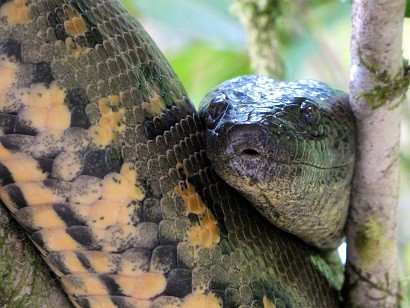
The green anaconda of South America regularly reaches the high 20s in captivity. Whispers circulated for years of pet anacondas over 30, until Guinness made it official in 2021. Annie the anaconda was owned by Paul Swire from 1989 to 2004, in the South African town of Vryheid. He eventually donated her to Monte Casino Bird and Reptile Park in Johannesburg, where she had her own enclosure with a heated pond.
It was Swire who applied to Guinness for the record, triggering an avalanche of paperwork and interviews, for iron-clad irrefutable verification. Finally, it became official – Annie was the oldest living anaconda, at 37 years and 317 days.
As of 1975, the oldest anaconda on record was 29.0, and in the wild they may reach 20 years. This time, age correlates well with being massive, as the anaconda is the second longest snake at an average of 3.7 metres. The all-time wild record was 5.21 metres, according to a study on 1000 wild anacondas.
Being huge is a practical benefit as well, because once they pass a certain length, the number of potential bird predators plummets. Anacondas continue to grow for every one of those 30 years, even if it’s mere centimetres.
| 2 | Mexican burrowing python |
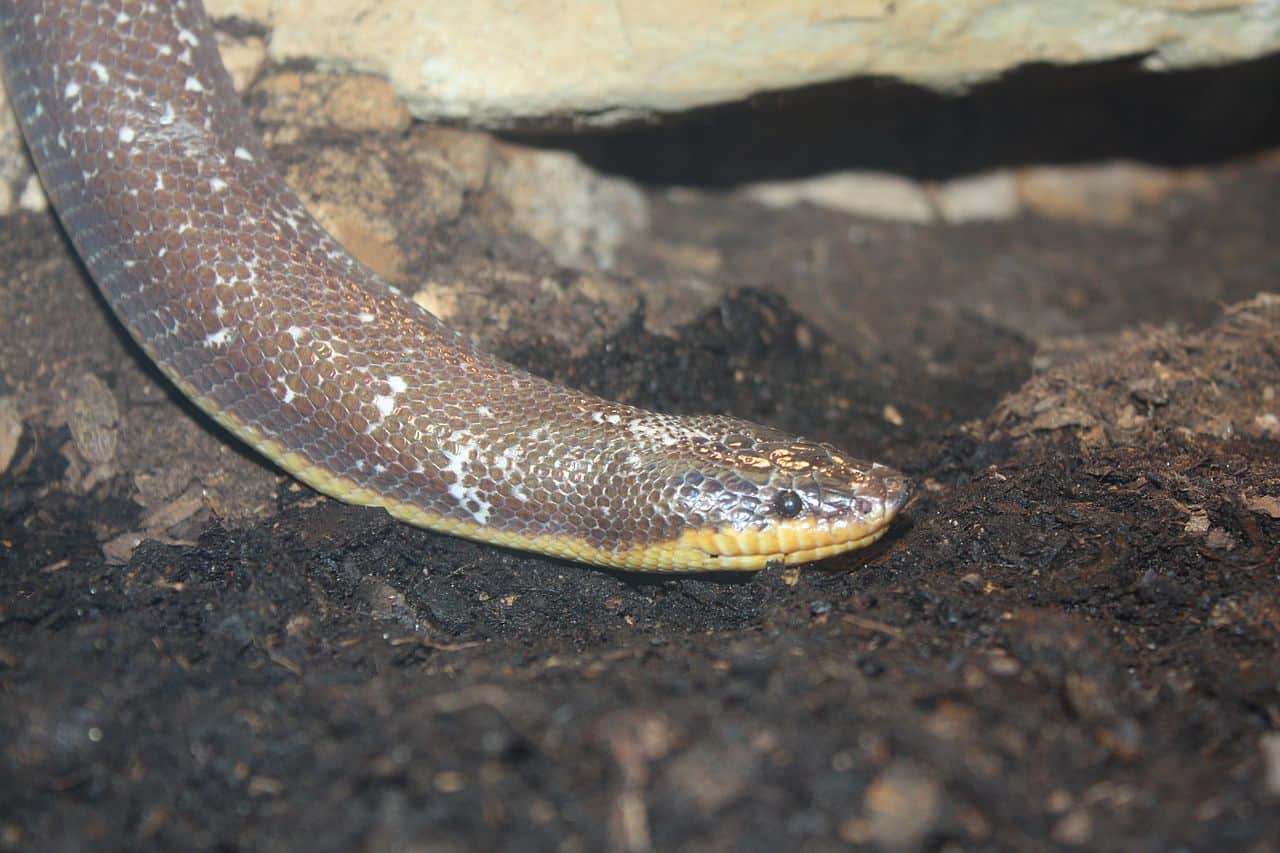
This species is totally isolated on the evolutionary tree. It belongs to its own genus, and its own family. It isn’t a true python; its closest living relative is the sunbeam snake thousands of miles away in Thailand.
During this isolation, the Mexican burrowing python has picked up the habit of living for decade after decade. As of 1975, the record was 32.8 years, but Utah’s Hogle zoo reports that 40 years is possible in captivity, without the pressure of predators like birds.
Mexican burrowing pythons only reach a maximum of 157cm, but have a thick body and a shovel shaped head designed for burrowing. Another strange skill is fatty acids secreted from their scales to ward off ant pests. Why they evolved this longevity is unknown, but they’re a slow, shy snake, which spends time rummaging around its soily base and hiding under mulch. They’re equally shy in captivity; they live long, but you may not see them much. The only thing that revs them up are other males, which they engage in brutal fights.
| 3 | Northern Pacific rattlesnake |
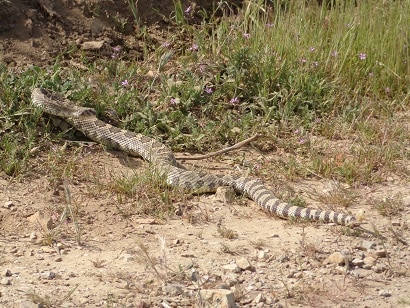
The tiger rattlesnake has the worst venom of its family, at LD50 0.6mg, but it might be jealous of its northern pacific rattlesnake relative, which boasts an extremely long lifespan instead.
The Herpetological Review confirmed that the longest lived captive Pacific rattlesnake was Striker, who died in 2015 at age 34. He was scooped up in Auburn, California in 1982, a tiny youngling who would have been born in winter 1981. He was brought to biology teacher Doug Stryker, at Placer High School, who kept him as a pet in his classroom. Striker remained there for 31 years, mesmerising generation after generation of schoolkids.
Eventually, Doug retired, and the new principal didn’t want to keep Striker. So he was adopted by nature reserve Sacramento Splash instead, who kept him until he finally died in 2015. It’s perfectly normal for this species to reach 15-20 years in captivity. Pacific rattlesnakes inhabit a large swathe of the western USA, spilling into northern Mexico and southern Canada. This species reaches a record of 162.6cm.
| 4 | Sumatran short-tailed python |
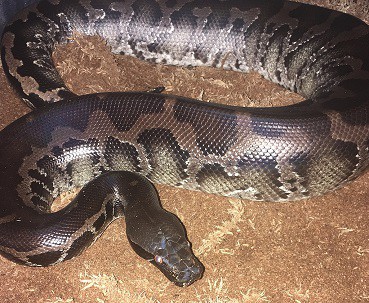
A resident of Sumatra and the surrounding islands. The short-tailed python (python curtus) is related to the nearby blood python, but is grey and jet black instead of having red patches. Short-tailed pythons create an optical illusion of shortness in their pictures, due to their enormously thick bodies. In reality, they average at 1.5-1.8 metre, with a maximum of around 200cm.
Short-tailed pythons are normally found relaxing on swamp edges, by marshes, or on riverbanks. They’re popular in the pet trade for their docile relaxed nature, but another reason is their long lifespan. 20 years is unremarkable, and the longest on record reached 27.8 years.
Despite being the world’s longest snake, the 5 metre reticulated python has only ever reached 25 years. Fishermen treading past local riverbanks could be seeing the same short-tailed pythons year after year. As an ambusher which doesn’t travel much, each python could have its own boggy swamp which it rules over for decades. Like a turtle, its slower lifestyle probably helps it to grind on year after year.
| 5 | Ball python |
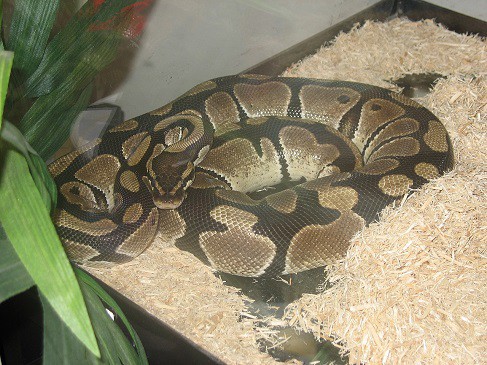
There are 3600 species of snakes in the world, and growing every year. One of them, somewhere, has to have the longest lifespan, and that happy duty has fallen to the ball python (python regius) of West Africa. This snake is most populous in Nigeria and Ghana, where it’s worshipped as a local deity, watching over villagers and protecting their harvests. There are even shrines and temples devoted to ball pythons. Again, those happy farmers might be encountering the same watchful ball pythons decade after decade, because this snake regularly reaches 30 years.
In captivity, they hold the official oldest snake record, a female who was still laying eggs at 62 years old, despite not having encountered a male for 15 years. The snake was donated to St Louis Zoo in 1961, and still lives there. Another record ball python reached 47 years in Philadelphia zoo.
The funny thing is that ball pythons are the shortest python species in Africa, scuppering any length correlation. They reach a record of 183cm, while the huge African rock python (occasionally 6 metres) has reached 27.3 years, but can’t match Python regius. Nature is mysterious sometimes – who knows why the honour fell to the ball python of all snakes.
| 6 | Indian python |
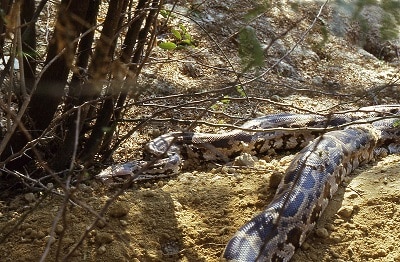
The Indian python lives in the jungles of India, and measures 2.7-3.3 metres (maximum 4.6m). It has savage hunting tactics such as inward pointing, saw-like teeth to prevent prey from escaping its mouth, and its longevity is also top ten material.
The average age in captivity was reported at 15.8, but the oldest of all time was a wisdom-gaining 34.2. In a similar vein, Indian pythons can go months without eating thanks to a slow metabolism, and the longest gap on record was 2 years. Their metabolism is very slow, and slow metabolisms are believed to be why primates (including humans) live longer than other mammals. Indian pythons are particularly slow and lethargic, slithering directly forward in a straight line, and rarely bothering to attack humans.
India is not as jungled it once was, with towns and rice plantations creeping up. But there are plenty of wild places where snakes reign supreme, and who knows how old (and massive) some of the Indian pythons there might be.
| 7 | Forest cobra |
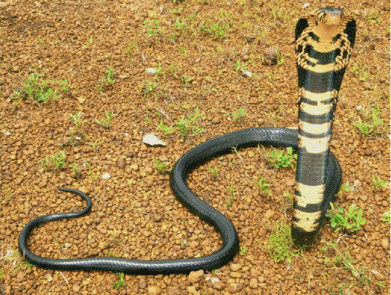
Forest cobras might be the most underrated of Africa’s nightmare snakes. They’re the longest cobra in Africa at a maximum of 320cm, and their venom total is gargantuan at 571mg. They live in forested areas at higher altitudes, and they laugh at the concept of stealth. Forest cobras prefer to charge across the forest floor at high speeds, with their fangs bared and no attempt at disguise.
The other claim to fame is their longevity. At 28 years, the forest cobra once held the record for oldest venomous snake of all time. Sadly, this was beaten – by the forest cobra. The new record holder was Cosby, who reached 35 years old. The dates are all correct and confirmed, as Cosby was born in Bronx Zoo on August 31, 1979, and shipped off to Melbourne, Australia in 1982.
Despite his lethal neurotoxic venom, Cosby was a relaxed forest cobra with a “cruisy” attitude. He was so comfortable in his home that after his regularly scheduled exercise, he slithered back to his exhibit on his own. In the wild, forest cobras are believed to reach 20 years.
| 8 | Brown rainbow boa |
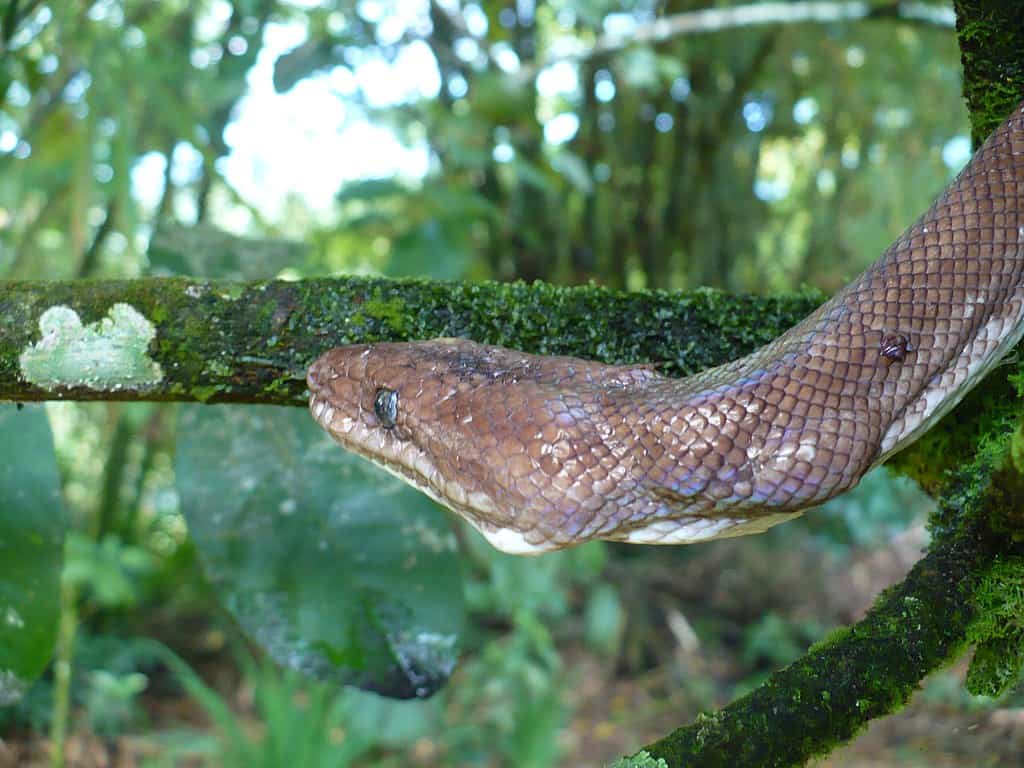
The most northerly of the rainbow boa family, inhabiting central America and northern South America like Trinidad and Tobago. They’re not to be confused with the rainbow boa (Epicrates cenchria), which has flashier colours and lives further south. The brown rainbow boa (Epicrates maurus) holds the Guinness World Record for longest lived captive snake ever.
The snake in question was Ben, purchased by Dennis and Andrew Hatterman at an Illinois Pet World in 1974. For much of his life, Ben the boa resided in Valdosta, Georgia. Nobody expected that Ben would reach the grand old age of 42, finally passing away on June 6th 2016. Most brown rainbow boas on the market are born in captivity, and consequently, we know Ben’s exact birthday: May 31st 1974.
Keeping them alive is no manic science lab project either; tossing them mice is more than sufficient for their diet. They’re said to be the easiest rainbow boa to keep, starting off nippy and feisty, but soon settling down. Their length is a mere 120-150cm, perhaps up to 2 metres, which barely hints at the long lives they can lead.
| 9 | Timber rattlesnake |
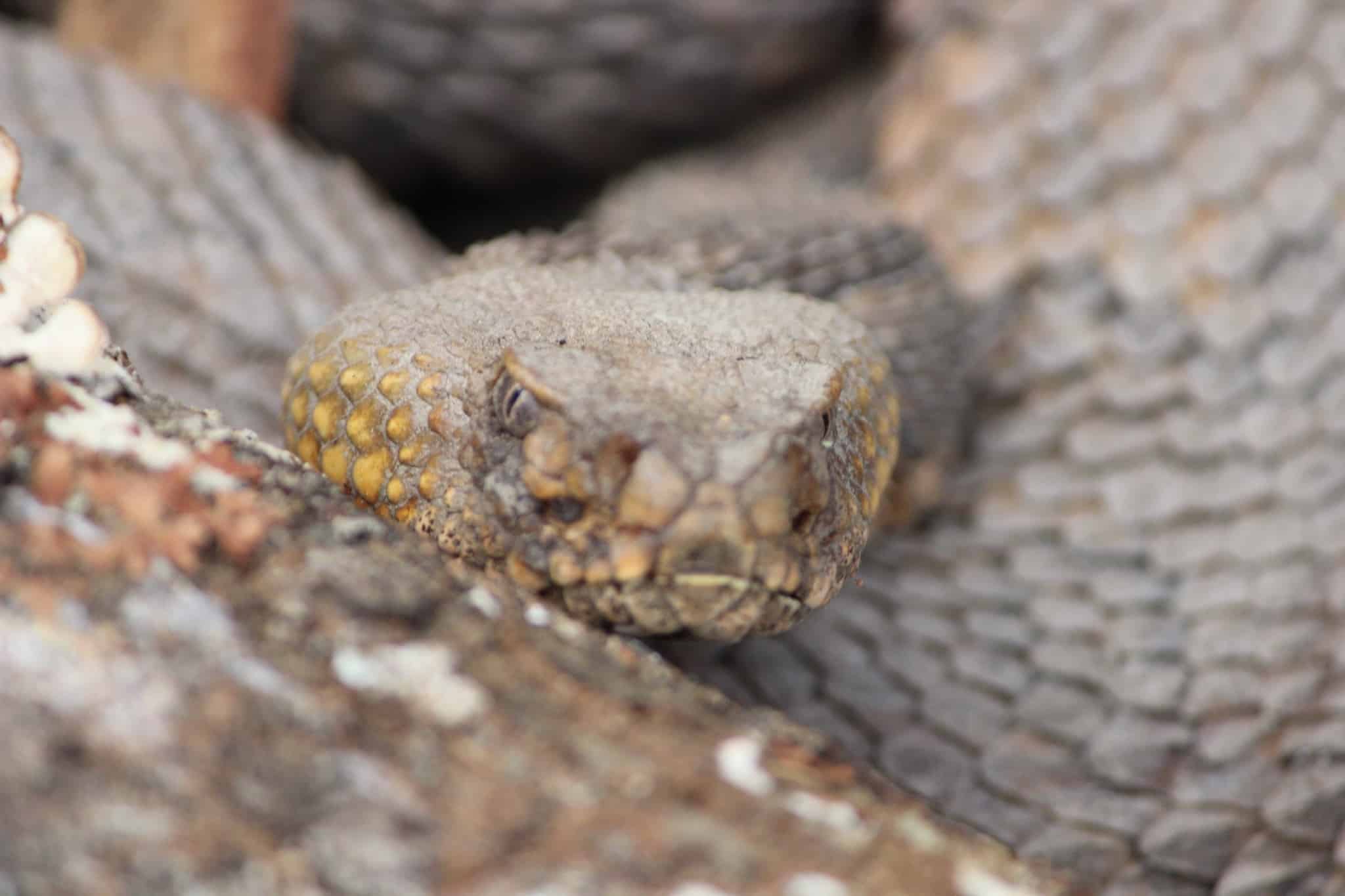
A huge length is a decent hint to a snake’s lifespan – the reticulated python and anaconda both have long lives. But the likes of Mexican burrowing pythons and brown rainbow boas break the rules by just being average. The timber rattlesnake is also part of this club. Its average adult length is 100-150cm, with a maximum of 189.2cm, yet they commonly reach 25 years old in captivity. There are even whispers among snake enthusiasts of 50 year old timber rattlers.
This species inhabits most of the eastern USA, with a sharp dividing line down the centre. As of 1975, the record lifespan was 30.2 years. That has since been superseded by the official oldest rattlesnake on record: a 36.5 year timber rattlesnake reported by Herpetological Review in 1994. Its story made for grim reading, as the snake was unable to hunt its own food from age 25 onwards (not like the other old snakes on this list).
The snake was found on October 6th 1954, and died on June 2nd 1991. In all those years, the snake only ate 125 times, averaging at 3-4 times per year, including 20 hooded rats and 76 white rats. All signs suggest then, that the timber rattlesnake lives long because of a handy slow metabolism.
| 10 | Boa constrictor |
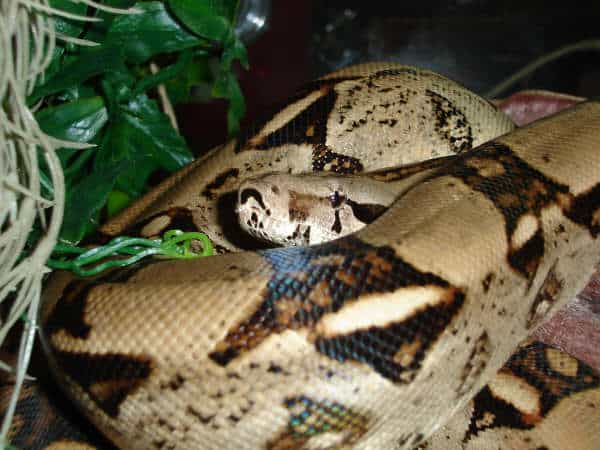
It’s said that boa constrictors routinely pass 20 years even in the big, bad wild, with no pet owners to protect them. In captivity, they regularly reach 30 years old, with a steady supply of mice and rats.
The longest reliable record of boa constrictor age was Popeye the boa, who was purchased from a London dealer in 1936. For the next 34 years, he lived in the home of a private individual, before being donated to Philadelphia Zoological Gardens. He was finally euthanised on April 15th 1977, after suffering health problems related to old age. Nevertheless, Popeye had achieved 40 years, 3 months and 14 days – 40 was surely a target in his mind.
Being such a popular captive pet, we have a much clearer picture of their longevity than most snakes. The flipside is that with so many as pets, freakishly long-lived ones are more likely to be noticed. Other species could live as long if the sample size was larger. Nevertheless, everyone agrees that boa constrictors are unusually long-lived. They’re another slow metabolism snake, occasionally going months without eating. Boa constrictors likely exceed 4 metres in the wild.
